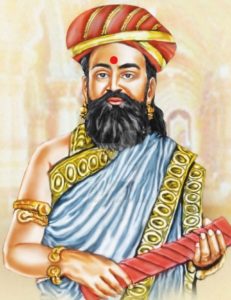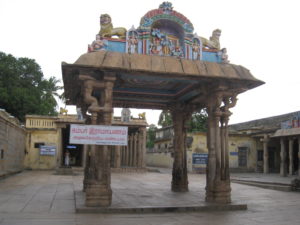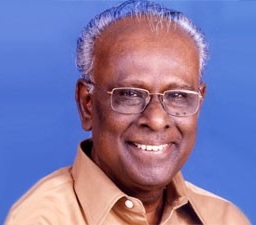
Kamban describes crowning of Ram in Ayodhya thus: “With Hanuman guarding the throne, with Angadha, holding the royal sword, with Bharata holding the white royal umbrella, with Lakshmana and Shatrugna fanning with white Chamara, with Sita, her perfumes wafting from her hair, sitting with joy, the forefathers of Thiruvennai Nallur Sadayappa handing over the crown, Sage Vasishta placed the crown on Rama’s head.”
Though the mention of Sadayappa of Thiruvennai Nallur by Kamban here is by way of expressing his gratitude to the philanthropist, it adds a Tamil stamp to the most important scene in the Kavya.
“Even before Kambar wrote Ramayana in Tamil in the 12 Century AD, there are many ancient references to the story of Ramayana, implying that the story was familiar in the Tamil lands even before the Common Era. References to the story can be found in the Sangam literature of Ahanaṉūṟu,(400BC) and Purananuru (300 BC), the twin epics of Silappatikaram (dated 2nd Century CE) and Manimekalai, and the Bhakti literature of Kulasekhara Alvar, Thirumangai Alvar, Andal and Nammalvar (between 5th and 10th Centuries CE)”.
That is how well-known revolutionary freedom fighter V. V. S. Iyer records the fact that Tamils were conversant with the story of the King of Ayodhya several millenia back in his Tamil book ‘Kamba Ramayanam A Study’. Therein he mentions a religious trait prevalent among tamil Hindu families till the beginning of 19 th century thus: “This epic is read by many Hindus during prayers. In some households, the entire epic is read once during the Tamil calendar’s month of Aadi (mid-July to mid-August)”. The Ramayana Month ritual is now defunct in Tamilnadu. But Hindu families in Kerala observe it with full fervour even today during the Aadi month.
In 1910 V.V.S Iyer was tracked by British police and he had to escape from a London hotel; he abandoned most belongings, taking only the bare essentials. That included a copy of Kamba Ramayana, upon which later on he wrote a brilliant commentary.
Kamban established himself as the leading point in king Chozha’s Court. poets Ottakoothan and Kamban were assigned the the task of translating Ramayan in Tamil from Valmiki’s Aadi Kavya. Days went by. Ottakoothan worked away industriously while Kamban appeared to take his own sweet time to get started. One day the king queried about the progress of the work; Kamban immediately replied that he was working on the Ram Setu chapter. Ottakoothan felt that it was impossible and asked Kamban to recite a verse from the chapter, which Kamban did.
Did Kamban’s genius produce that beautiful verse impromptu to stun the listeners, or was the entire Ramayana embedded in Kamban’s consciousness all the time? Essentially, Ramayana was imbedded in the Tamil consciousness signifying that Bharat is culturally one since time immemorial.

